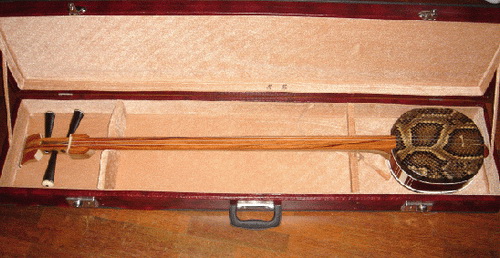
In conjunction with the music theme of our February 2014 magazine, we’ll be profiling other Chinese instruments that your kids may enjoy learning here on the beijingkids blog. To see how a group of US exchange students took to erhu, guzheng, Peking opera, and Chinese bamboo flute, turn to page 62 of our latest issue.
The mystical sounds of string-plucked instruments arguably provide the most archetypal soundtrack to Chinese life. These are the instruments responsible for the numinous soundtracks found in almost every film that features misty mountains and long-bearded wise men.
We featured the guzheng in our most recent edition, but here are some others from the same family that are available for your kids to learn here in Beijing.
Ruan 阮
Commonly found in Chinese orchestras and Peking opera, the ruan is a small, four-stringed lute dating back over 2000 years. While not dissimilar to a western banjo in shape, it is usually made of wood and traditionally has silk strings, although most are now made of steel.
The instrument is either played with either a plectrum, as often used for a guitar, or using acrylic nails attached to the players’ fingers. The former allows for volume and the latter is most commonly used for intricate pieces or solos.
Young players of guitar, banjo, and other fretted string instruments may take well to the ruan.

Liuqin 柳琴
The liuquin is a pear-shaped mandolin that, like the ruan, has four strings, now also made of steel. It is a miniature version of the larger pipa (琵琶), and thus produces a higher tone than its more commonly-played cousin. The instrument’s small size requires that players have deft and intricate finger movements. Perfect for kids whose hand size limits their ability to stretch across the neck of a guitar.
The frets sit much higher than on Western string instruments, to the extent that the players’ fingers won’t touch the instrument’s body. This allows greater control over the sound produced, and results in less noise and fewer annoyed neighbors.

Sanxian 三弦
The sanxian (literally “three strings”) looks a lot like the erhu, the two-stringed fiddle you will have seen played at tourist destinations around the capital. In fact, the playing technique could not be less alike.
Rather than using a horse-hair bow, the sanxian is played like a guitar and, thanks to the resonator at the bottom, can produce a rather loud sound. There are no frets on a sanxian, so the player adjusts the tone by sliding their finger up and down, as one would a violin.
The instrument has declined in popularity, partly due to its price. It is significantly more expensive to produce than other simpler string instruments. But as they’re available for rent in Beijing, why not give it a go?
For more information on these instruments, or to find lessons for your kids in Beijing, visit the Chinese instrument music school CNEthnic.
Photos courtesy of Wikimedia Commons



